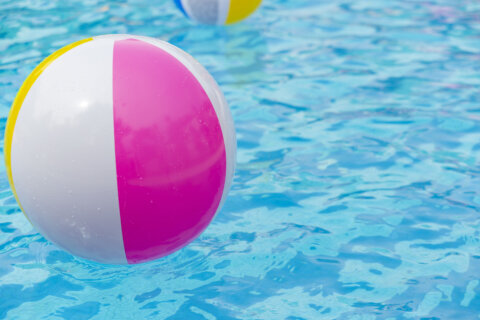OCEAN CITY, Md. — Summer is in full effect, which means the beaches are packed with visitors. But the biggest threat to anyone swimming at the beach isn’t a shark or a jellyfish or anything else swimming in the water — it’s a riptide.
“More people die in rip currents than die in tornadoes or hurricanes, or a lot of other big weather events,” said Ocean City Beach Patrol Capt. Butch Arbin, who points out that that’s even more astonishing when you consider that “many of our states can’t even have rip currents because they don’t have an ocean.”
But while Arbin knows how dangerous riptides are, he also knows how preventable such drownings can be.
“Ninety-five percent of all the drownings that occur here in Ocean City, Maryland, over my 44 years, 95 percent have occurred when we’re not on duty,” Arbin said.
If someone swims when lifeguards are on duty, he said, “they may be one of our 2 to 4,000 rescues that summer. But the good news is they’ve been rescued.”
If you do find yourself struggling with a rip current taking you away from the beach, Arbin says, you just need to remember the letters R-I-P:
R stands for relax. “Don’t panic,” Arbin said. “Rip currents do not pull you under. They may appear as though the person is being pulled under but that’s simply because the rip current pulls the person away from the beach and as they get in deeper and deeper water they can’t keep their head above water if they’re not a good swimmer.”
I stands for I need help. “Indicate you need assistance … not panic, but just kind of wave your arm, ‘Hey, I need some help,’” Arbin said. He adds that a lifeguard will come out and quickly get you if that’s what happens.
P stands for parallel. “And that’s the real critical thing,” Arbin explained. “Because rip currents are not very wide and you’re being pulled out away from shore, [so] trying to swim straight in is like running on a treadmill. You don’t get anywhere but you wear yourself out.”
“Many a good swimmer has drowned in a rip current because they simply exhaust themselves to the point that they don’t have enough energy to keep their head above water, they slip below the surface of the water, and they simply suffocate.
“Whereas if they don’t panic, turn to the north or turn to the south, and swim parallel to the beach, they’re going to be out of the rip current in not too many yards and then they can make their way back into the beach,” Arbin said.
He says trained professionals like the lifeguards on the beach can spot a rip current before you even dip your toes in the water. Part of it is the view they get from their elevated seats, but it’s also because they’re going to be more familiar with the stretch of beach, and thus more aware of the formation of the sand underwater. But there are factors beachgoers can look for.
“When waves break, they make the white foam, so the foam is going to flow out with the rip currents,” Arbin said. “You may see a strip of white foamy water going away from the beach, or as the waves break they churn up the bottom and make sandy water — you’ll see a sandy strip going out. It looks different than the surrounding waters.”
Not only are riptides not very wide, they only flow as far out as the sandbar, which in most places won’t be too far away from shore. They won’t take swimmers way out to the deep sea, Arbin adds.








